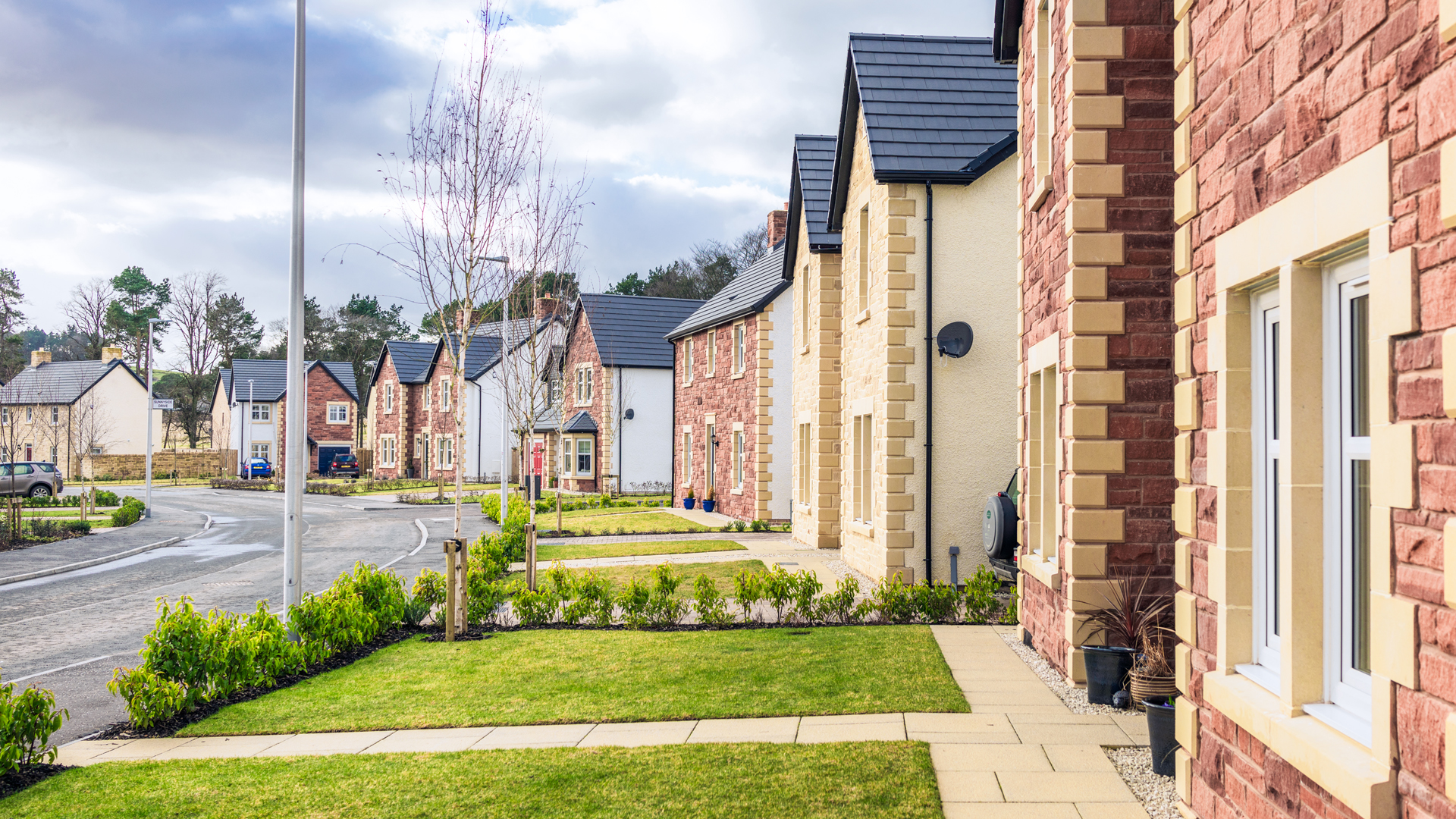A home of one’s own seems like just a dream for an increasing number of property-obsessed Brits. Rathbone Income Fund co-manager Alan Dobbie considers whether a growing political consensus could help increase the supply of homes, bringing this dream to fruition for many – and more sustainable returns for homebuilders.

Building the UK’s future?
Brits are inarguably property-obsessed. Culturally this feels spot on. Property portal Rightmove gets over 2 billion visits a year and a quick glance at this week’s TV listings confirms that ‘Grand Designs’, ‘Kirstie and Phil’ and ‘Extraordinary Extensions’ are still primetime viewing for many.
Yet while the allure of home ownership may be as strong as ever, the reality is that the percentage of us owning the home we live in has been declining for much of the past 20 years. At just 63%, our owner-occupier rate is now lower than the US and most European countries. The linked effects of low housing supply, poor affordability and a dysfunctional planning system have spiked the property dream for many. With an election looming, both main political parties are well aware that they need to get on top of this issue. We think 2024 could turn out to be another fascinating year for the UK’s housebuilders.
Given that the household goods and home construction sector makes up just 1.3% of the FTSE All-Share Index it can seem that UK investors are also prone to over-obsessing about the property market. However, its gyrations reverberate throughout other equity sectors. Directly via bank mortgage volumes, brickmakers’ sales and demand for self-storage space or indirectly via consumer confidence indicators. With aftereffects of the first interest rate increases in more than a decade and the confidence-sapping mini-budget of 2022 still being felt, the housing market has entered 2024 delicately poised.
To be blunt, not many thought we’d enter the new year in this position. At the start of 2023 most property experts expected house prices to fall 5% to 12% over the year. With a top-line dependent on new home volumes and house prices, housebuilder stocks were expected to suffer another leg down. In the end, the collective wisdom of the experts proved too gloomy. Halifax, the country’s largest mortgage lender, estimates that house prices increased almost 2% in 2023. Nationwide believes they were little changed over the past 12 months. This, combined with a consensus view that mortgage rates have peaked, was enough to propel the share prices of industry bellwethers, Barratt, Taylor Wimpey and Vistry up more than 50% last year.
So where does this leave the sector? Have housebuilder stocks run too far too fast? A glance at headline price-earnings multiples might suggest so. High-teen multiples for notoriously volatile businesses with little control over market demand may seem pricey. However, we’d argue that increased political willingness to deal with the chronic undersupply of new homes could be just the catalyst the sector craves.
Study after study has shown that the UK needs to build significantly more homes than it does each year. The Office for National Statistics’ recently revised population projection, highlighting an expected 10% increase in the UK’s population by 2036, suggests that the shortage is unlikely to improve any time soon. In fact, we believe we may be reaching a tipping point. A recent Ipsos poll showed that Britons view housing as one of the most important issues facing the country today – even more than crime, education and climate change. Another poll by Opinium highlighted that Labour’s aim to overhaul the planning system and restore the 300,000 new homes per year target is going down much better with voters than the Conservatives current housing policy. Trailing heavily in the polls, Tory strategists may feel the need for radical action. Any moves to unblock the planning log-jam and disempower Nimbyist local authorities would provide housebuilder executives and investors with some much needed confidence, though the Chancellor’s Spring Budget failed to produce anything significant on this front.
In our view, a combination of more clarity around the path of mortgage rates and greater political acceptance that the current system is not working could be enough to push housebuilder share prices on from here. Crucially, their balance sheets remain in very good shape, with many housebuilders holding more cash than any debts they have outstanding.
Further, with many dividends rebased at a more sustainable level, there’s increasing clarity around the investment case. This isn’t to say the sector is now out of the woods. It would be naïve to assume that either party possesses a magic wand to fully reform the current planning system. However, acknowledgement of its failings could be the first step on the path to fixing, arguably, the nation’s problem: a lack of quality and affordable homes. Any progress should increase the chances of housebuilders posting sustainable returns going forward.









